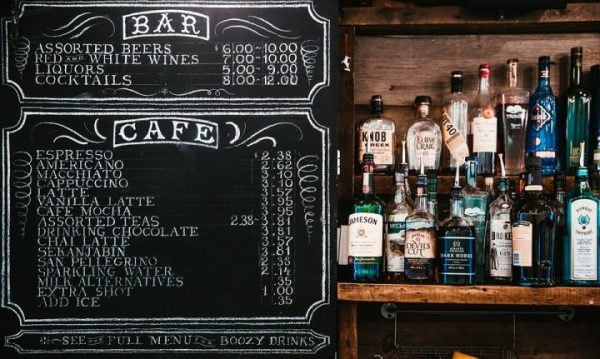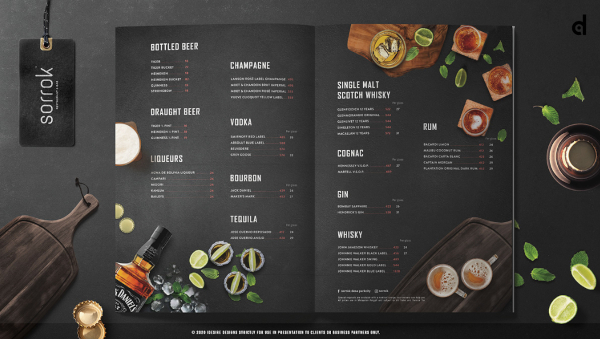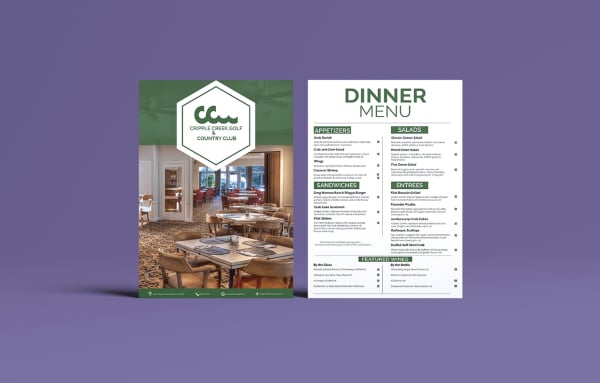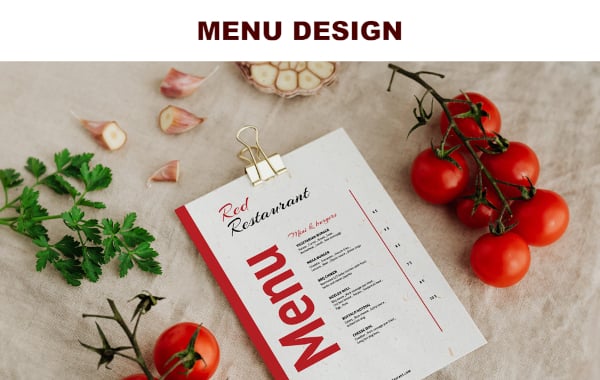Table of Contents
Menu Design Hacks for Increasing Customer Orders
If you think that the only strategies that food business owners adapt in their restaurants are limited to what secret ingredients to use in their dishes or what slogans to make to have a better marketing campaign, think again. For the longest time, one of the strategies restaurants are using has been literally hidden under every customer’s nose: they control how the customers order through a well-crafted and meticulously made menu design.

These pieces of paper wrapped in a cardboard or plastic cover are never made in a single sitting. It’s one thing to invite customers inside your restaurant, but it’s another story where they now sit down and prepare to order. Once customers have taken a comfortable seat, the ball is now in your hands to make sure customers maximize their time, appetite, and money in your restaurant.
Menus are the customers’ first encounter in the restaurant as they provide a visual on how the food looks and might actually taste, so make sure to create a menu that balances facts and mystery.
Like in all stores or marketplaces, customers get annoyed when salespeople talk too much. This scenario can also be applied to restaurants. Customers certainly don’t want to hear waiters or servers emphatically describe each dish as they are still reading the menu and thinking of what to order. Make your menu do all the talking and make them decide what to eat, but not without using some techniques to make them order more than they actually should. Here are some menu design hacks.
Also, try checking these menu templates if you’re planning to open a restaurant or fast food chain anytime soon.
Restaurant Menu Design
Dinner Menu Design
Food Menu Design
Use a variety of colors

Psychological principles can be found in every aspect of life and menus are no different. Common knowledge backed by studies have shown that a person prefers a product which has more visual appeal and tends to purchase that same product multiple times. The colors mentioned here don’t necessarily mean the actual color of the menu and the colors used in the text. The colors also relate to your dishes. A brown-colored menu showcasing bolognese spaghetti with its bright red sauce and a Caesar salad with its light greens are definitely more appealing than the same brown-colored menu with only text written all over it. If you have a menu which contains multiple pages, then using different colors for each page is also a good alternative.
Pair the salads with the meats

Speaking of salads, there is nothing more frustrating than having salad in your menu and all your customers are ordering steak. There is that tendency to just remove the salads altogether since no one is buying them anyway, and adding to that dilemma, they are often the most perishable items in your menu. Most restaurants try to serve up a couple of healthy dishes (healthy meaning the ingredients aren’t dipped in oil) in their menu, and one of them is a green salad. Placing all the salad dishes in one corner or the last page of the menu is a terrible idea. Have a salad dish situated beside a meat dish or have multiple salad dishes surround a single meat dish so you can attract customer interest in these menu items.
The 99 effect
Have you ever wondered why restaurants or fast food chains price their items in values of nines? Why not just round it off to a whole number so that it would be easier to give change? It doesn’t matter if the food costs 99 cents, $3.99 or $199, it always ends with the number 99. Department stores also use these in their products. It’s not a lucky number and it certainly doesn’t assure you a high net income at year’s end, but there is a strategy behind this move. Food shops use this strategy to trick customers into thinking they are buying a much cheaper product. Customers also tend to focus on the leftmost number in the price. For example, a hamburger that costs $1.99 makes customers think they’re buying it for $1 since their eyes are already fixated on the number 1. If they buy two hamburgers and they’re still focused on the number 1, then it becomes more expensive and they end up paying more. It’s a great strategy used to great effect by restaurants.
Be creative with pricing

No, this does not mean you can place a 1,000% markup on your dish or price your fish fillet $200 when it only cost $30 for all the ingredients, including the fish. This concerns the presentation of your food prices. it is not advisable to list the prices of all your dishes in one column. It’s even more dangerous to list them all from the cheapest to the most expensive. Even if the dish looks satisfying but it costs $599 for a single person, then a customer will not order that dish. You are not selling tools or hardware for your car when all the items are listed in a single column. Add some variety and be creative when presenting the prices of your dishes. Some restaurants “hide” the prices by inserting them in a phrase where the food is described, or pair them with similarly priced items so that customers have more options to choose from.
Use descriptive text
Adding descriptions to your best-selling dishes is a great way to sell them. Instead of letting the waiter describe the dish, write them down in the menu instead. What do you write in the description? First, the ingredients that were used to make the dish. Second, the processor cooking style that was used. It’s not just the mere description that makes customers excited and imagine how the food turns out; it’s how the dish is being described. Get creative with the adjectives you use. Sumptuous, mouthwatering, tantalizing, and exquisite are some popular food adjectives.









